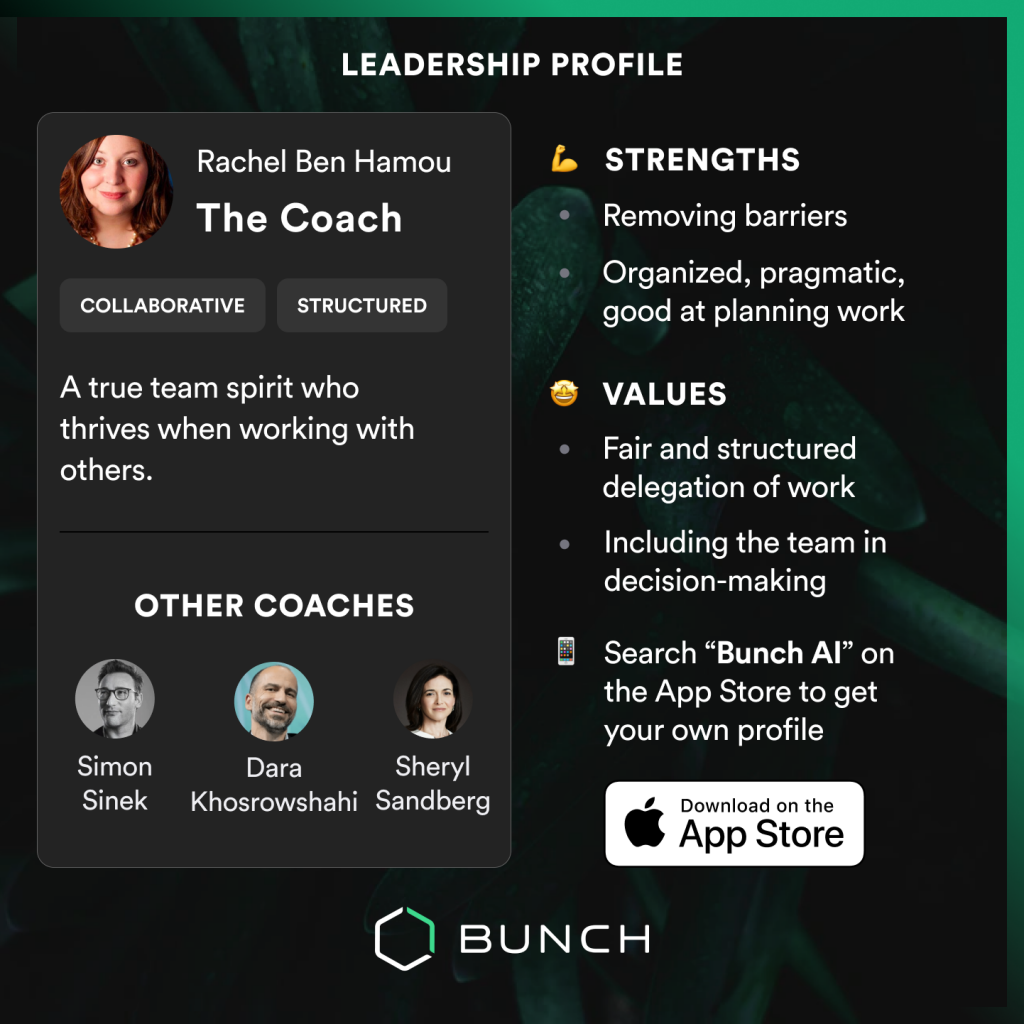Meetings can be friends or foes. 11 million meetings happen daily in the USA alone and managers spend at least 12-14 hours per week in meetings (never mind the prep time). What’s alarming is that 50% of managers claim that their meetings are unproductive.
But if we constantly complain about and dread unproductive meetings – how to actually make a meeting valuable?
We all know that feeling of walking out of a useless meeting, and most often it’s because of poor virtual facilitation. The great news is: Everyone who organizes a meeting, can take the lead and facilitate a kick-ass meeting, instead of a dreadful one.

These skills don’t just come magically to all of us so that’s why we sat down with Rachel Ben Hamou, the Founder of PeopleStorming, and an expert in facilitation to find out how to actually facilitate a great meeting.
Her approach to facilitation mixes together learnings and insight from the world of improvisation, Agile methodologies, and product/design thinking, so we were pumped!

We also explored the challenges of virtual facilitation – or how to make Zoom meetings suck less – and discussed some actionable tips you could use to transform your meetings into productivity power-sessions.
Virtual Just Isn’t the Same
Yes, the eternal work-from-home life has major perks, but the challenges of remote leadership are glaring.
Effective virtual facilitation requires heaps of thought and effort – typically more than the in-person alternative. So more work for the meeting organizer beforehand.
Rachel broke down some of the most significant obstacles for virtual meetings…
1. People are easily distracted
In-person meetings can be tricky enough when everyone has the internet in their pocket. Virtual facilitation is one step harder with intense distractions and temptations (particularly when people are working from home).
“There’s all the notifications on all the devices, the kids, the pets, the neighbors, etc. And then just our own psychology – battling against that temptation to check social media or email.”
2. Lack of social cues
Rachel says that “the way I like to do in-person facilitation is to give the group just enough to get started on an exercise or discussion, and then simply be with them in the journey, in the experience”.
This approach relies heavily on being able to read the social cues in the room which are almost completely absent in virtual meetings.
“You can’t see the body language of the participants. You can’t experience the environment they’re in so you don’t know if people are too hot, too cold, starting to feel tired or in need of a break”.
Add another layer to the issue when breakout rooms for workshops are involved. It’s not possible for the facilitator to see everyone at once or answer a quick question across the room.
“I can go along and visit a single breakout room, but I can’t necessarily be there at the moment a participant looks puzzled or when someone is asking ‘What are we meant to do?’… it’s much harder to care for people that you can’t see or hear.”
3. Adaptation is more challenging
Rachel is well-versed in guiding participants across the conceptual stepping-stones that form a meeting and drawing on the right tools. It often requires a willingness to change the plan of attack as a better approach becomes evident.
“In person, you’d notice someone going and grabbing a flipchart or walking up to the whiteboard and starting to write on it. For us to do that virtually, we need to be prepared with our digital tools and make sure folks have access – it can sometimes interrupt the flow if we aren’t ready for that”.
Being adaptable is a key skill for modern leaders in a world of uncertainty. Hosting meetings online means the virtual facilitator must have a set of tools/approaches in their back pocket and ready to be whipped out on the fly.

Like what Rachel has to say? Get tips from Rachael from your Bunch Leadership Coach.
How to Nail Virtual Facilitation
Facilitating well while virtual means making sure that your meeting is an effective vehicle for discussions, decisions, and connection.
The PeopleStorming framework for facilitation is focused on what Rachel calls “Intentional Meetings: Deliberately Selected, Thoughtfully Designed, Skillfully Delivered”.
With that in mind, here are Rachel’s top virtual facilitation tips for ensuring that meetings are successful and productive…
1. Before calling for a meeting: Ask yourself…
Rachel believes that “good facilitation starts before you even know you’re having a meeting.”
She recommends you start by asking yourself these five key questions…

2. Prepare and adapt
“If it’s a 1-hour meeting, you might need to spend 2 hours preparing. As a professional facilitator that would be typical for me (2x-3x the length of the meeting). When you’re facilitating in-house with the same group of people repeatedly (i.e. your team), you’ll be able to bring that time down.”
It’s no surprise that time invested by the facilitator upfront pays out as an overall reduction of time in the meeting itself.
This preparation work not only creates efficient meeting structures and processes, but it also readies the virtual facilitator to help the team adapt and improvise the meeting approach and goals as needed.
“Once you’ve got the preparation part nailed, let go of your attachment to the plan and be ready to improvise. Be ready to place the participants’ needs front and center – which can mean pivoting from a feature ideation session to a ‘what is our product strategy’ session, for example.”
3. Listen and leave your ego at the door
Rachel is also mindful of the competing hats often worn by organizational leaders when running meetings.
“When you’re a virtual facilitator, it’s not about you; you should almost blend into the background. And that’s probably something I see most in leaders, where they find it difficult to wear both hats at the same time, so they’re trying to have their leadership presence because they’ve been told by all these people ‘you have to appear to be a leader.’ But facilitation is almost contrary to that because it’s about getting out of the way.”
4. Check-in, check-out, reflect
Check-ins are an important part of gathering – even more so without that in-person connection.
Rachel recommends using the traffic light system for a quick check-in at the start of a meeting.
“Having everyone speak at the beginning of the meeting is a way to normalize speaking/participating. So, if I come to a meeting and I’ve got something contentious to say, I’m much more likely to say it if I already said something as part of the check-in round.”
She also recommends adding a check-out to the docket.
One type of check-out involves reflecting on the meeting itself. Rachel explained that we should be asking some key questions during these reflections such as, “Was this a good use of our time? Was this an effective interaction? Could we have gotten the same result in a different way?”

For gathering feedback, she recommends doing a ‘fist of five’. For example, if the team is asked “was this a good use of our time”, they would then hold up between 1 and 5 fingers to indicate the possible answers from strong-no to strong-yes. The facilitator can then either follow-up immediately for more detailed feedback or do so at some later time/date.
Bonus: Virtual Facilitation Tactics
Rachel also shared a few very tactical thoughts specific to virtual meetings…
- Make sure to on-board people to digital tools (Zoom, Miro, Mural, etc.) that you’re using before getting into meeting content – creating a level playing field for all participants.
- For specific activities (such as ideating or affinity-mapping), be sure to repeat any instructions or guidance more than once because people will be juggling apps and tools while trying to listen to you.
- Remember to strike a balance between talking heads (people being able to see you) and on-screen info (screen sharing). Both are valuable. Turn off screen sharing when it’s not contributing anything.
You can get more advice like this from the PeopleStorming Community Newsletter.
Facilitating Your Way to a High-Performing Team

Rachel closed out the conversation by echoing the true and urgent need for leaders to become great facilitators.
“Facilitation is the foundation that everything stands on. It has exponential returns – a happier team, a healthier team, and a higher-performing team”, Rachel reiterated.
“As a team member, if I feel seen, heard, and understood (like I’ve been able to contribute), I feel more creative. I feel a better sense of trust. I know I can be vulnerable. I can experiment. I can fail.”
Tapping into the collaborative power of meetings begins with solid facilitation which is just one more lever you can pull to drive better performance and build stronger connections with your team.
Adaptability is just one of many skills you can gain using the Bunch Leadership Coach – try it free!





